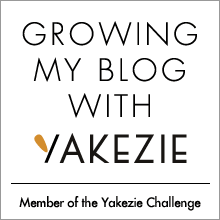My Financial Independence Journey » Investment portfolio » Portfolio Status: April 2013
Portfolio Status: April 2013
 Continuing with my goal of financial transparency, I’m posting my portfolio as it is at the beginning of April of 2013.
Continuing with my goal of financial transparency, I’m posting my portfolio as it is at the beginning of April of 2013.
Under the portfolio tab above is where I am keeping a more or less current list of my positions. The below is where my portfolio stands as of April 1, 2013.
2013 Portfolio Value as of:
- January 1st: $91,567.06
- February 1st: $95,514.53
- March 1st: $99,743.57
- April 1st: $102,160.83
I made numerous transactions this month since I was able to add margin to my account, thus freeing up $8,000 in cash that was being used to secure the puts that I sold in December. I still have a few thousand dollars in cash in my account that I am trying to deploy into new stocks.
Also, there is now an options page where I am tracking my options activity.
In terms of dividends, I pulled in $317.44 in March of 2013.
2013 Monthly Dividends:
- January: $164.00
- February: $265.11
- March: $317.44
One of my major goals for this year and next year is to substantially increase my emergency fund so that it can cover one full year’s worth of my expenses ($35K). So let’s track that too:
2013 Emergency Fund Value as of:
- January 1st: $4,753.16
- February 1st: $7,353.16
- March 1st: $8,965.33
- April 1st: $10,560.33
Portfolio as of April 1st, 2013:
Filed under: Investment portfolio · Tags: portfolio status






I recently found your blog and am very intrigued. Good job. I am a lil late to the savings. but, i’m on the cusp on clearing my student debt(14K) in less than 6 months and looking anywhere from 1k-2k savings per month. What do you think is the first things to do? emergency fund/dividend stocks/commodity(gold)?
Thanks for stopping by!
I would start by building a small emergency fund if you don’t have one already. Then I would invest enough money to take full advantage of your 401K match (if you get one). The next thing that you need to do is figure out what kind of investing style works for you and develop some general guidelines around that. If you don’t have much time or desire, stick to index funds. If you’re willing to invest time learning about individual companies value investing or dividend growth investing could be for you. I’m not a fan of commodities unless you’re interested in speculation. Just try to learn as much as you can before you start deploying your capital.
I am a big fan of how you have diversified your DG portfolio. That will really pay off over the next several years. Good luck in building up those savings. You have made some nice progress over the course of the first quarter this year.
I’m trying to increase my portfolio’s diversity over time, with the end goal of having each of the sectors weighted about equal. But it’s always a balancing act between keeping up the diversification and grabbing the best valued stock out there.
MFIJ,
Great month and you’re having a great year so far as the broader market continues to advance.
We’re now both shareholders in APD.
I’d love to be a part-owner in some of the other companies you have a position in – including GPC and LOW.
Keep up the great work!
Best wishes!
Thanks. I love APD. It’s a great materials company. GPC and LOW have been great to me so far. Although LOW is now really overvalued and only paying out something like a 1.6% yield. But I got it at a pretty good price and I think that the company (and dividend) has a lot of growth potential, so I’ll be holding onto it for a while.
I like your progress a lot. Thanks for sharing it.
As far as your margin freeing up your put selling security, I would still consider it blocked. That’s why I liked cash secured puts. Right now with the margin, the broker only blocks a cash around 30% of your total trade if you get assigned, so if it happens and you get assigned, you suddenly may not have enough cash. Of course, you can avoid assignment by buying back your put and taking a loss, but there may be situations where you get assigned before expiration (if you trade American options) and then you have no choice but to come up with cash. Based on that I recently decided to keep the entire amount as if trading cash secured puts either on my account or elsewhere so when that happens I have some cash at hand.
I would consider my puts sort of cash secured now. I have oodles of cash sitting around in my emergency fund doing nothing of any use. So if I get assigned a stock and don’t mind keeping it, I’ll just pull the money from my emergency fund. If an actual emergency comes up, I’ll de-leverage and close out my options. I know that most of the personal finance world considers the emergency fund sacred, but I’ve decided to find ways to try to extract some utility out of it.
That makes sense. If you have cash aside available then it makes sense. I didn’t have it and was afraid to overextend my put selling. I am planning on selling GLD LEAPS and it may be dangerous. The maintenance requirement would be like 4,500 but if you get assigned you would have to come up with 15,000 to cover your trade (minus premium) which currently I do not have available. So in this case I kinda liked cash secured puts in lieu of the tier I have right now. I also do not get it. On one hand you have to be approved to this tier to take some trades on marginable securities which in my opinion would be otherwise safe if taken as cash secured puts and now I am taking a lot riskier trade. Anyway, I deal with it to keep my cash handy in case I get assigned unexpectedly (when unable to roll the put over and further in time).
I’m currently using my emergency fund as my cash-on-hand in case of assignment. The other thing that I do is only sell puts against companies that I would like to own at prices (strike – premium) that I would be willing to pay for them. That takes a lot of the risk out of it.
I do the same thing and selling puts only to those companies I am OK to own. But with tier 2 approval I do not have to have enough capital to buy those stocks.
I love that you’re being transparent with your portfolio. I’ll be ready to invest in the next year, so reading about what you’re doing and looking at your portfolio is helping me a lot. Keep up the good work!